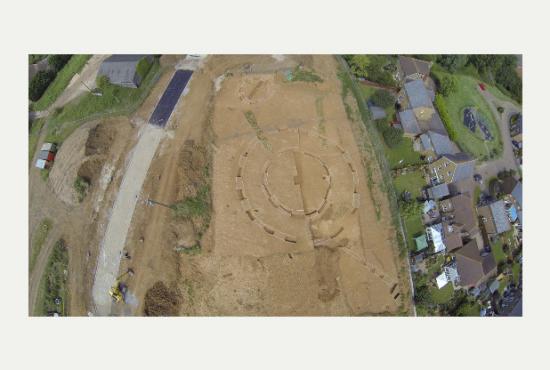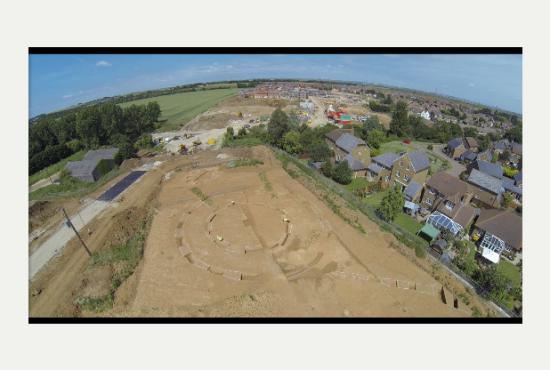Dr Paul Wilkinson / SWAT Archaeology
Source - http://www.canterburytimes.co.uk/Stonehenge-type-monument-excavated-Faversham/story-21787303-detail/story.html

Stone monuments similar to that of Stonehenge are being excavated near Sittingbourne.
SWAT Archaeology, based in Faversham, discovered the ‘henge-type monument’ during an archaeological investigation ahead of a housing developmentat Iwade Meadows.
Of particular interest are a number of prehistoric monuments dating back around 6000 years. Dr Paul Wilkinson from SWAT Archaeology explains it further:
SWAT Archaeology is undertaking an ongoing programme of investigation in advance of development by Persimmon Homes at Iwade Meadows just to the west of Sittingbourne in Kent.
Important archaeological remains dating to several periods have been found in the archaeological investigation. These date from Neolithic through to the medieval period and are being excavated and recorded prior to building the houses.
Of particular interest are a number of prehistoric monuments dating back some 6000 years and situated on a gentle north-west facing slope overlooking the Ridham fleet, a stream running through the centre of the site. The monuments are in a location that would have formerly had extensive views to the Swale Estuary and the Island of Sheppey beyond.
The largest monument is 30m diameter and formed of a pair of ring ditches.
The archaeological evidence suggests that the outer ditch may have originated in the Neolithic and been later transformed in the Bronze Age into a funerary monument with the addition of the inner ring. Further analysis is needed to determine the exact date, phasing and character of these two monuments.
The outer ring has an entrance facing north-east suggesting that it may have originated as a henge-type monument, a ceremonial gathering place of which Stonehenge is our most well-known example.
The inner ring appears to be later and is an unbroken circuit. This may be associated with a Bronze Age burial (as a barrow) though no burials have yet been found.

A second smaller monument lies close to the larger rings and may be a secondary barrow dating to the Bronze Age.
While the monuments may have fallen out of use for their primary function by the middle Bronze Age they seem to have still been significant landscape features as a track from the north east is seen to have been extended to the causeway entrance of the outer ring. Its purpose is not known but may be that the monument was reused as an enclosure for stock management at this time or could formally have been used as a ‘sacred way’ leading to the Neolithic ‘henge’.
The importance of the location in the Neolithic is reinforced by the rare findings of a series of pits close to the monuments that may indicate the area was being used before the construction of the monument or represents activity associated with it.
The investigation of the monuments is almost complete and the numerous finds and records of the investigation will be analysed to shed light on these prehistoric monuments and their surrounding landscape.